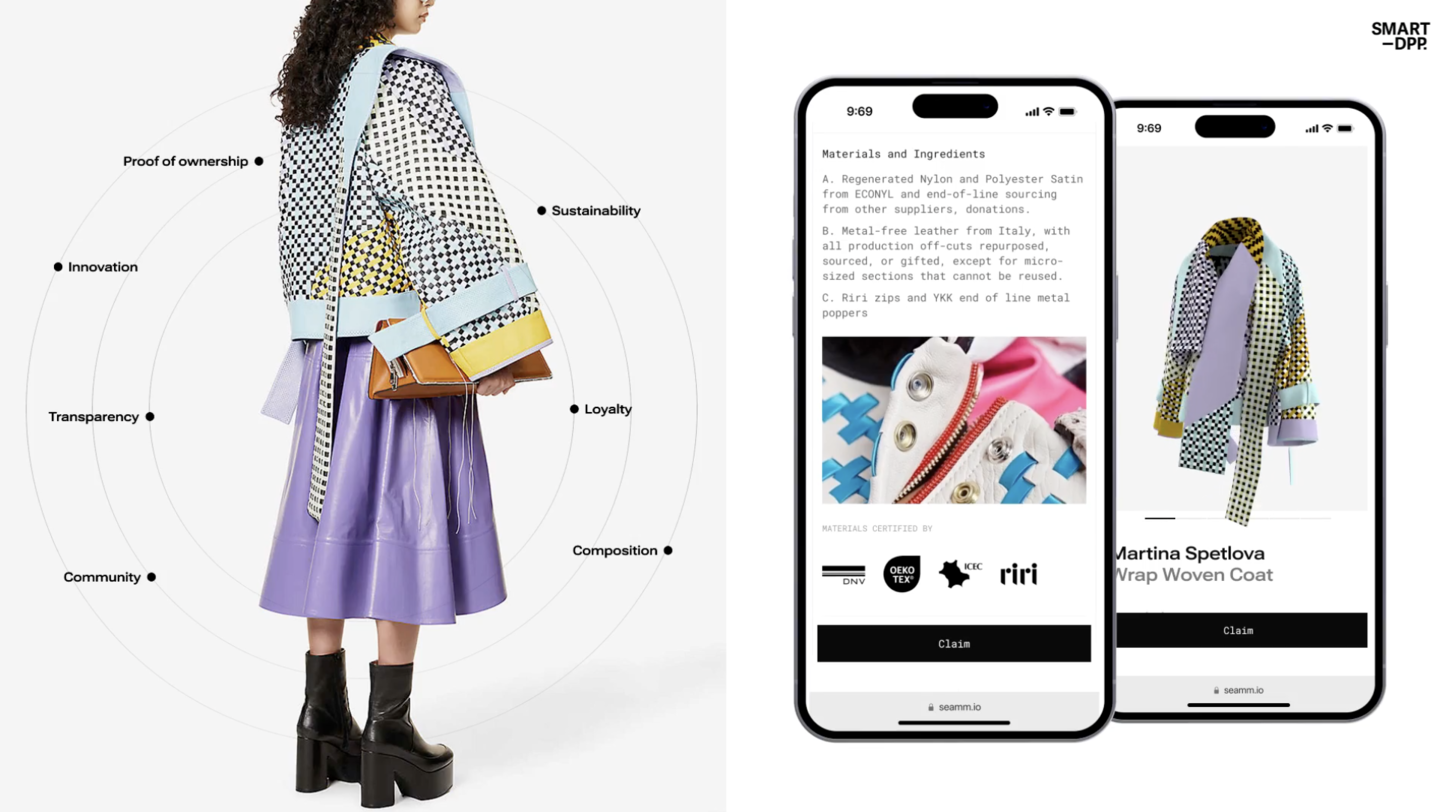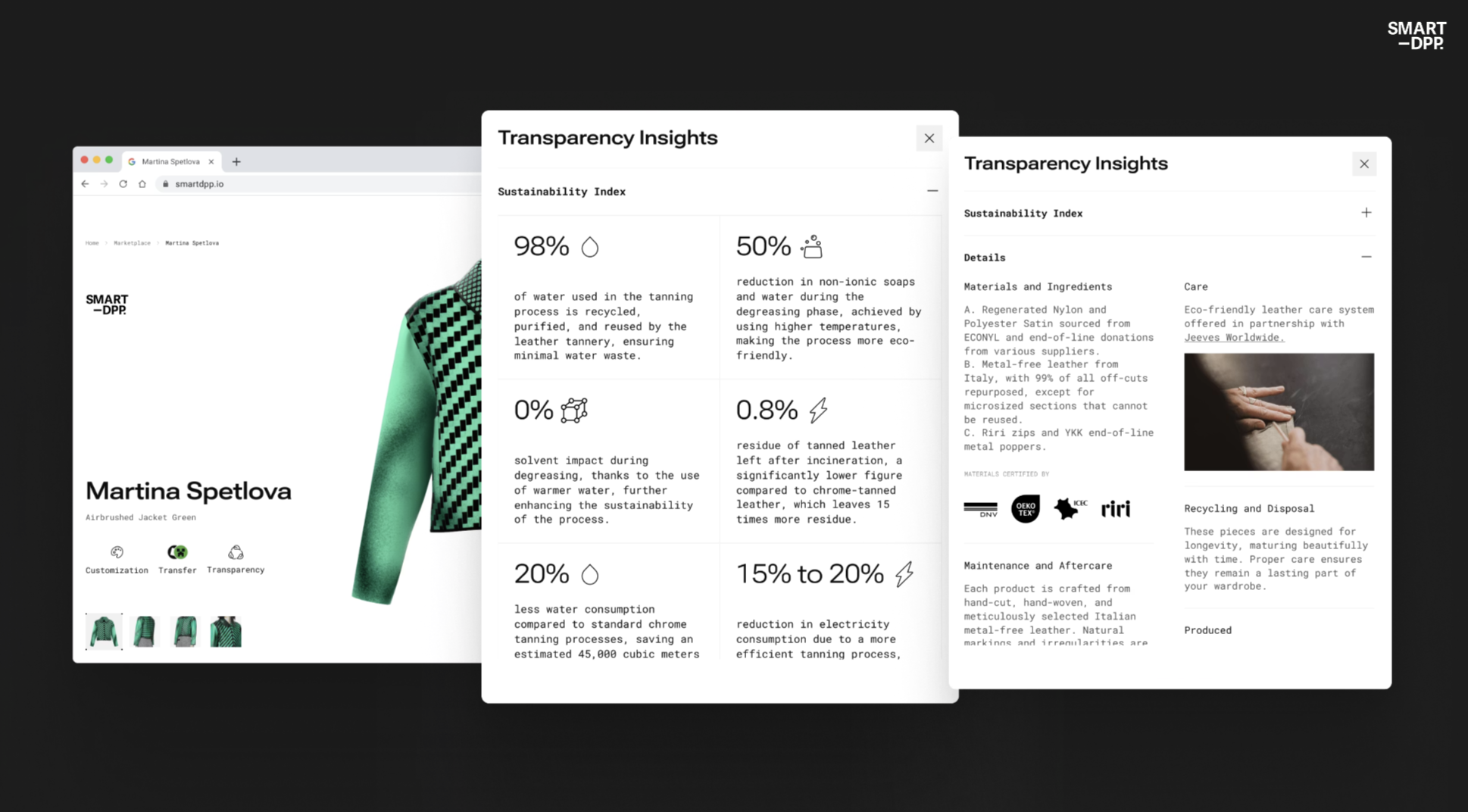As regulations tighten and customer demands develop, knowing what to include — and why — is more important than ever. This guide breaks down the eight core components that make up an effective DPP, plus a few optional features that can enhance your product experience. For each element, we’ve included supporting insights and stats to help you focus on what matters most.
Product Identifier
A DPP begins with a unique, machine-readable identifier that links it to a specific product. It’s essential for traceability and required by EU regulations starting in 2026. According to the European Commission, 100% of regulated DPPs will require unique identifiers under the Ecodesign for Sustainable Products Regulation (ESPR).
Product Description
This includes the product name, category, size, colour, and materials. Think of it as the digital version of a care label — but structured, searchable, and standardised. A 2024 GWI Commerce study found that 78% of consumers feel more confident purchasing when product details are clear and accessible.
Manufacturer Information
Where was the product made? By whom? When? This section provides context, builds trust, and supports traceability across the supply chain. IBM’s 2023 Consumer Report shows that 66% of shoppers are more likely to trust brands that disclose where and how products are made.

Material Breakdown
A transparent list of all materials used, including recycled content and origin, helps back up sustainability claims and supports recycling processes. According to an EU Commission consumer survey from 2023, 81% of EU consumers want clear labelling on sustainable or recycled fibres.
Environmental Footprint
Lifecycle impact data such as CO₂ emissions, water use, or durability metrics can be included where available. This enables credible sustainability storytelling and helps customers make informed decisions. McKinsey’s State of Fashion 2023 found that brands publishing environmental impact data experience up to 20% fewer product returns.
Repair and Care Instructions
Providing guidance on how to care for and repair a product extends its life and helps reduce environmental impact. This aligns with EU circular economy goals and makes a difference to customer behaviour. A WRAP UK report from 2022 found that 74% of consumers would keep clothes longer if they had access to care and repair instructions.

End-of-Life Options
Recycling instructions, take-back programmes, and reuse pathways should be clearly presented. These options matter not just for regulation, but also for customer loyalty. A 2023 First Insight and Wharton study revealed that 58% of Gen Z shoppers prefer to buy from brands that offer recycling or resale options.
Compliance Declarations
This includes legal disclosures such as REACH, CE marking, or ESPR-related documentation. It’s often the least visible to customers but is critical for market access. Without these fields, brands risk enforcement penalties or removal from the EU market, according to the ESPR Implementation Guidelines.
Optional, But Powerful
Some brands choose to go further, adding behind-the-scenes videos to highlight craftsmanship, blockchain authentication to support resale and prevent counterfeiting, or price history to demonstrate transparency. Seamm testing showed that video content increased time spent on a DPP page by up to 3x.
What it All Adds Up To
SmartDPP was built to help you meet these requirements — without the complexity. Whether you’re launching a small capsule or scaling across hundreds of products, we automate formatting, structuring, and updates so your team can focus on the bigger picture.
The most effective DPPs are more than just data containers. They create connection points — between your product and your customer, between storytelling and transparency, between compliance and brand value.
If you’re ready to explore what your DPP could look like, we’re here to help.




